Projects
Bristol Blue Glass Vase
The project was to reconstruct a large Bristol Blue Glass Vase, one of three it had met with a catastrophic accident resulting in it being in 46 recognisable pieces and 1 bag of dust as shown in the first gallery image.
The challenges were that there would be some material that was too small to reinstate, leaving gaps. The glass is lead crystal and flashed blue on each exterior surface, which gives the degree of translucency seen. Visibility of the repair was always going to be an issue close up, but at the distance the vases are viewed from on display the repairs will not be visible and the three vases will be restored to their original integrity.
Other issues that I had to be aware of were that the glass is an inconsistent thickness giving rise to different stresses within the structure, it is also very off centre in its construction. The actual act of piecing the object together was done dry, i.e. with no adhesive in place, this was only done after hours of studying thepieces to ensure that they were in the correct order.
The Glass was surface cleaned using distilled water on cotton wool swabs. IDA (Industrial Denatured Alcohol) was required for some areas where very stubborn dirt was present. The initial gallery image shows the shards cleaned and laid out ready to be placed correctly.
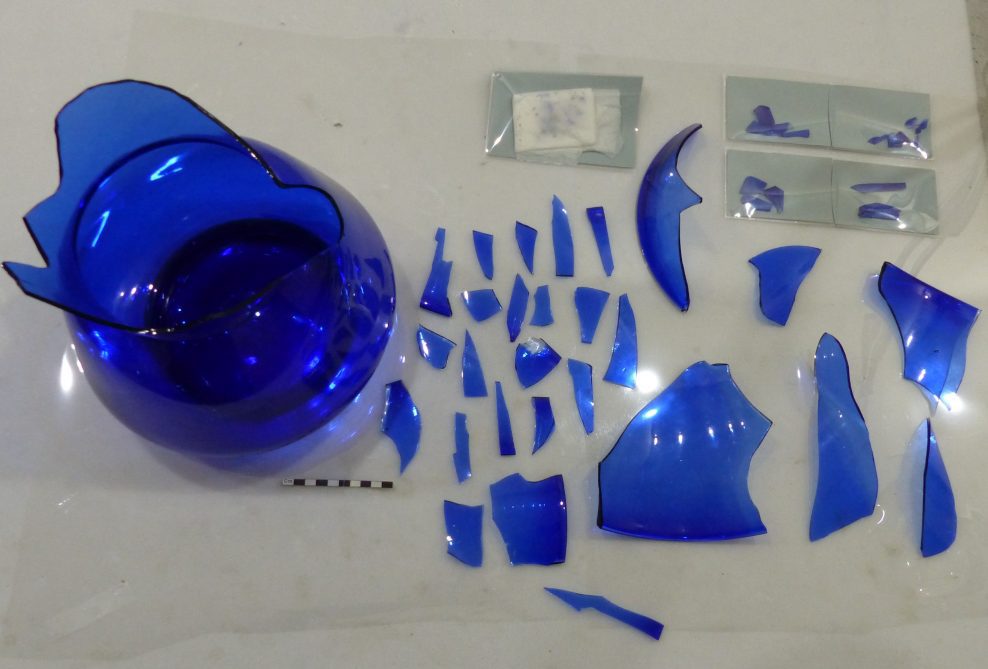
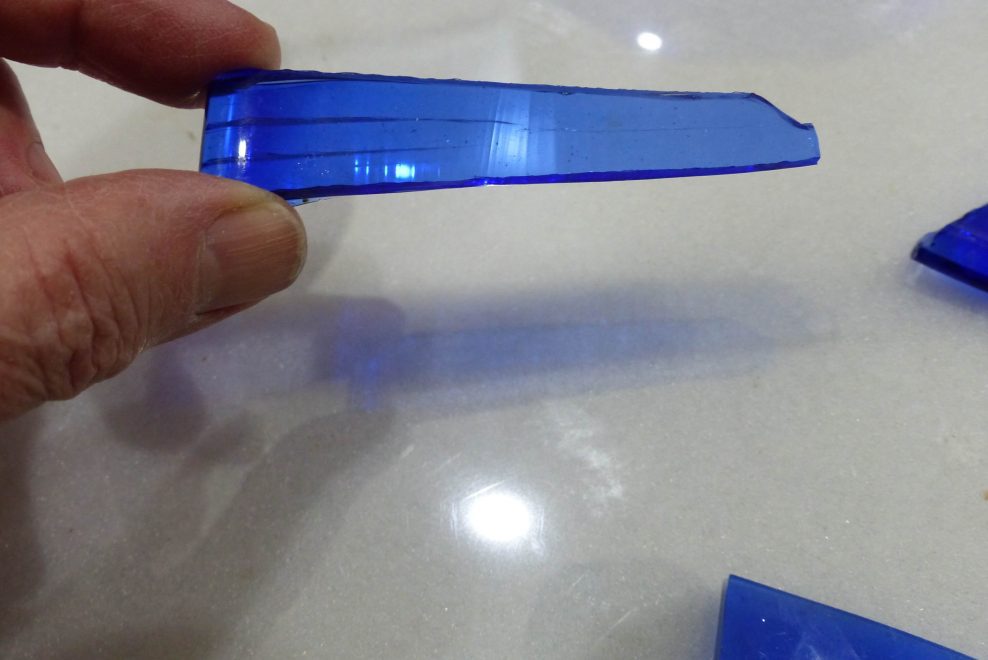
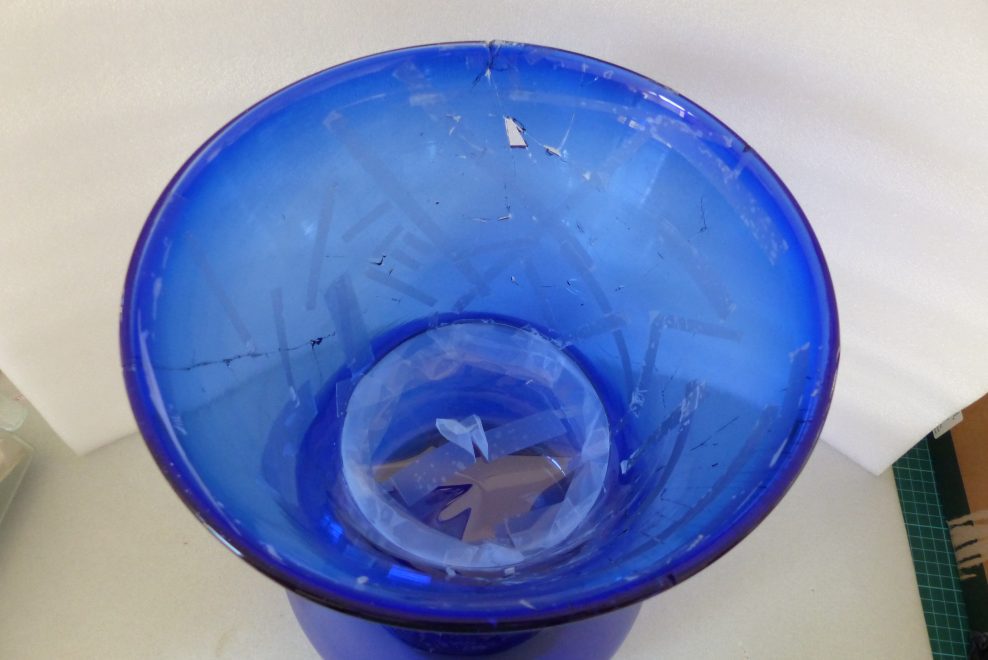
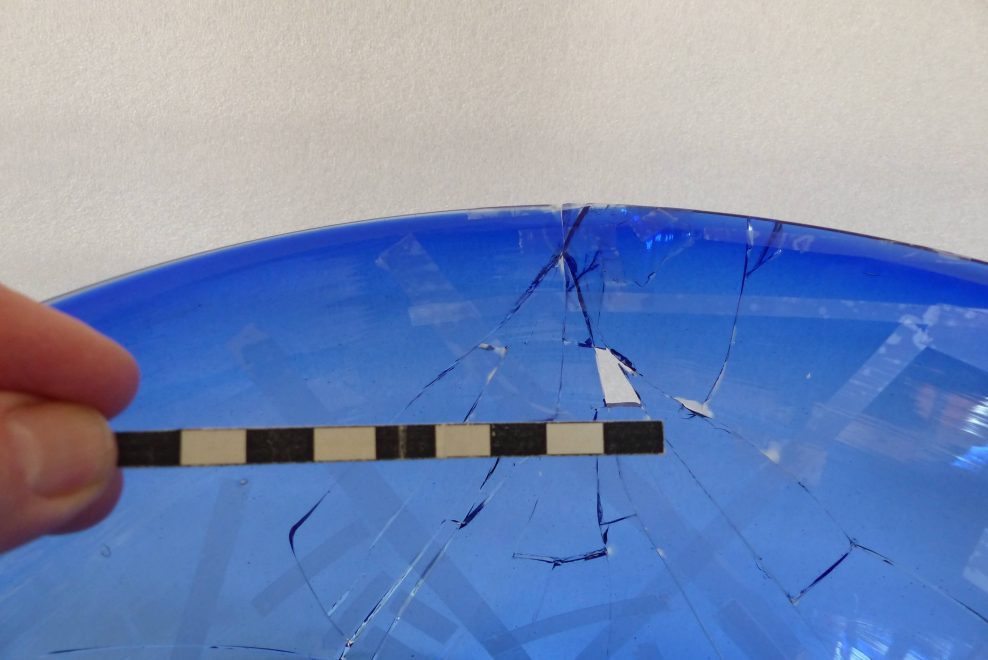
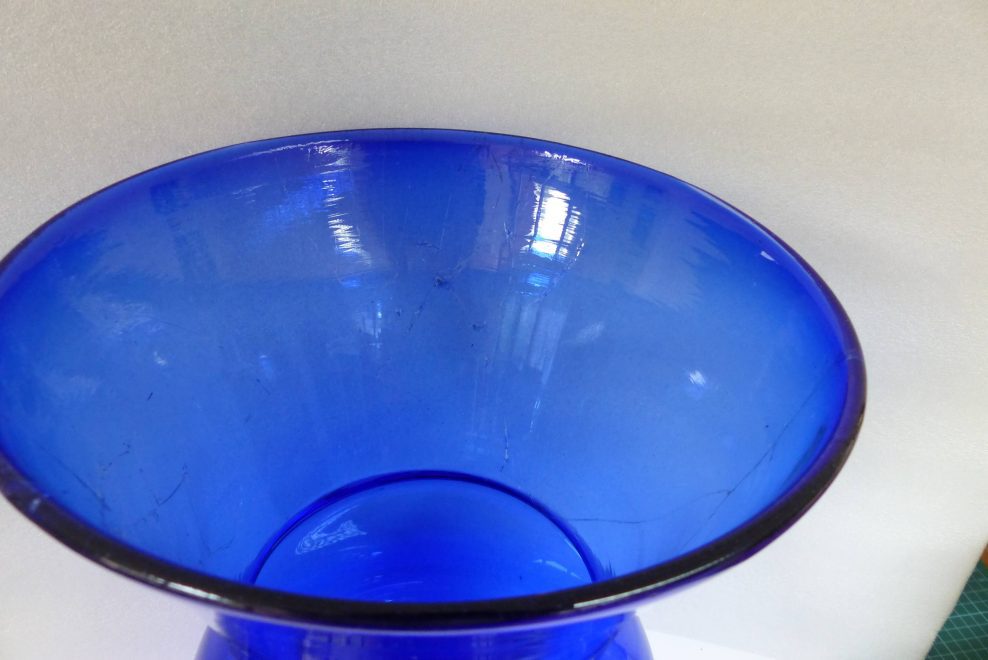
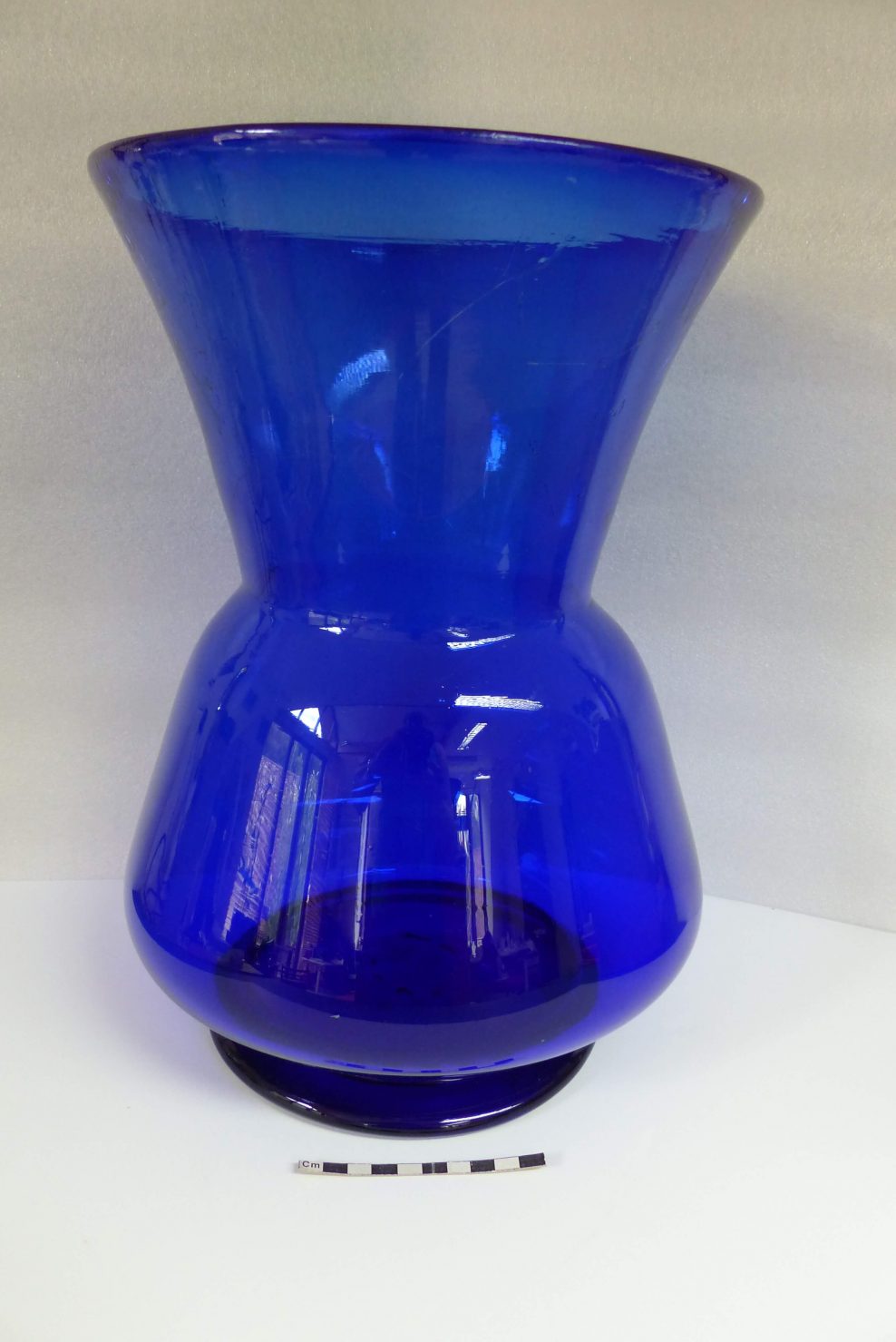
Once clean I tested 3 conservation grade epoxy resins to determine which was the most suitable for use. The tests were carried out using badly fractured but not broken shards to test for the best match of Refractive index (a close match gives the best reduction in visibility). Hxtal NYL-1 was the best match and this was used to stabilise all cracked shards before the reconstruction began. Hxtal NYL-1 has a curing time of 7 days so the object was left to rest before I began to lay the pieces out in the order that they went back together. One complication of the flashing is that the clear glass in the centre has fractured in many places but the blue glass has held its shape leading to crack lines within the body that no consolident could reach. They now become part of the history and patina of this object.
The second image below shows the interior cracks in the glass.






The vessel was carefully reconstructed, piece by piece and taped using scotch tape, no adhesive being entered into the joints until the final piece was in place. The slow curing natue of Hxtal NYL-1 is an advantage in cases such as this as it gives plenty of time for the resin to enter the joints by capillary action. The resin was entered into the joints from the outside of the vessel. The neck of the vessel was wide enought to allow the carefull entry of a acetone swabs to clean up any resin residue that had penetrated through to the inside. However, I constructed a clear plastic disc and adhered it to the narrow part of the neck with tape to prevent excess resin from dripping into the bottom part of the vessel, as illustrated in the third gallery image.






There was only one significant area unaccounted for as seen in the forth image below. This was filled with Hxtal NYL-1 utilising a double sided wax mould to hold the resin in place until it was cured.






The larger unplaceable shards were entered into this fill inorder to give it some colour and to keep all possible shards with the object. The fifth gallery image shows the rim once filled.






Hxtal NYL-1 was not suitable to use in the small missing areas along the breaklines but these had to be filled as they risk being dust traps and have jagged edges, break edges like this are also a source of weakness. After extensive research a conservation quality marine epoxy paint EPO DEX was found with extremely good water-white colour fast qualities (no yellowing) and very good adhesion qualities. The importance of the the resin used to fill the gaps was that it was a paint designed to stay where it was placed whereas the epoxy resins used in our industry will ususally migrate and run as they have a low viscosity. The break lines were very carefully painted a couple of times to ensure the correct depth. The working time of this resin is quite short, 20 minutes or so so many mixes were required.
No attempt has been made to disguise the break lines and fills in this vessel, they will remain visible to the naked eye and will become part of its history.
The final image in the gallery shows the object ready to be returned to its set.







